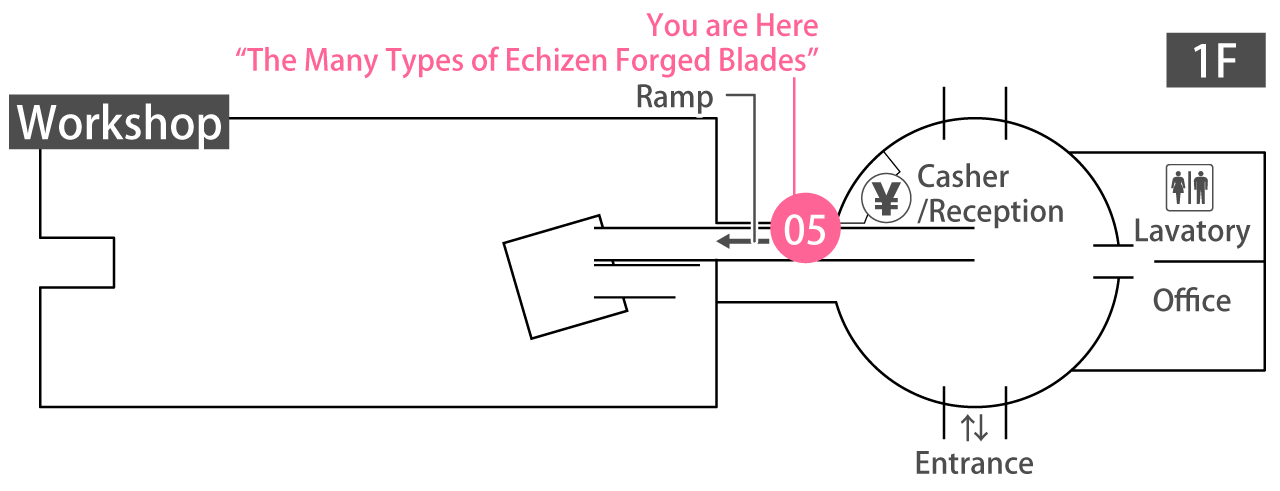 |
[05] The Many Types of Echizen Forged Blades |

|
Take a look at the blades of various types displayed on the ramp wall before moving on to the Observation Deck.
|

The shapes achieved through Echizen's techniques |
| The blades seen on display here can be broadly classified as hatchets, sickles, single-bevel knives, and double-bevel knives. Their shapes also vary somewhat, depending on their specific uses. |
| Each blade is made into the shape best suited to its intended use. This could not have been achieved without the makers' constant efforts to meet the specific requirements of customers, such as cooks and farmers throughout Japan, as well as the sharpeners' unparalleled ability to sharpen blades of any shape. |

 |
| Mikazukigama (Crescent-Shaped Sickle) |
After he moved to Echizen, Chiyozuru Kuniyasu made swords, but in addition, he also made a farming sickle in the shape of a crescent moon (mikazuki in Japanese) he saw reflected in a lake. This sickle represented the beginning of the Echizen blade-making tradition that continues to this day.
The techniques that earned this sickle a reputation for cutting well have been passed down as a tradition to today's bladesmiths. The arced blade edge is made of hard, resilient steel, finished carefully to be even, and it retains its sharpness even through long use. It is an example of the type of result that can only be achieved through hand forging.
|

 |
Blades have been produced for a wide variety of uses throughout Japan. The vegetable-harvesting knife, developed through the cooperation of farmers across the country, comes in various shapes suited to different vegetables, and plays a role in farming nationwide. The craftsmen's pride and enthusiasm to get things perfect were highly appreciated.
Echizen Forged Blades are widely used throughout Japan, playing an ever-increasing role in both regional revitalization and farming.
|
Floor Map |
 |
|

